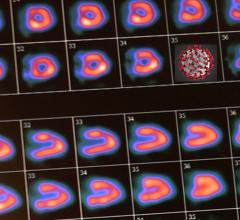
April 8, 2011 – Spectrum Dynamics has installed the second D-SPECT (single photon emission computed tomography) system using cadmium zinc telluride (CZT) nuclear imaging detectors. The new detectors enable a new generation of high resolution, low-dose nuclear cameras. The CZT nuclear imaging detectors are from a new supplier, Redlen Technologies. This is the commercial release of Redlen's first integrated CZT nuclear imaging detector product. "This is a very important milestone for Spectrum," said Jim Haisler, CEO of Spectrum Dynamics. “Having a new supplier of CZT imaging detectors in the industry is critical as it will allow us to ramp up the distribution of D-SPECT systems worldwide. Spectrum and Redlen are currently in the process of completing a long-term supply agreement. Our success with Redlen is due to the close working relationship both engineering teams had during the development and integration of the new CZT imaging modules and our co-development of the detector electronics.” "The opportunity for our team to work closely with the nuclear imaging industry's leading innovator was a huge benefit for us to ensure our first CZT imaging module product hit the mark," said Glenn Bindley, president and CEO of Redlen. "We believe the D-SPECT cardiology camera is just the first step in the industry's transition from legacy scintillation imaging to high-resolution, low-dose direct conversion solid state imaging. We anticipate our continued close collaboration with Spectrum on imaging module development to drive new industry performance benchmarks." The design incorporates nine rotating columns of CZT detectors that are able to focus on specific anatomical points in the body, thereby improving the signal-to-noise-ratio. This also eliminates the need to rotate the gantry or the patient to sample the organ of interest, improving patient comfort, reducing claustrophobia and patient motion problems. Solid-state CZT based detectors, combined with advanced new reconstruction algorithms, provide the foundation for rapid imaging and clinical applications not possible with conventional sodium iodide based detectors. They also enable dramatic reductions in radiation dose to the patient and significant improvements in image quality. The new Redlen M1762 nuclear imaging module provides a 40 x 40 mm CZT imaging array with 256 pixels. The module provides direct digital readout and averages less than 6 percent energy resolution for Tc-99 based imaging. The module provides a key building block to enable a new generation of direct conversion low-dose, high-resolution nuclear imaging cameras. For more information: www.redlen.com, www.spectrum-dynamics.com


 August 03, 2023
August 03, 2023 









